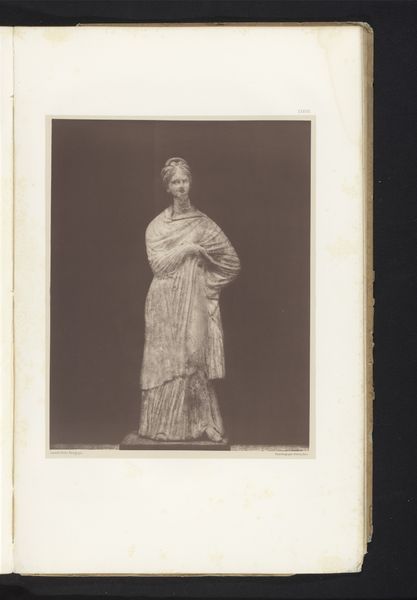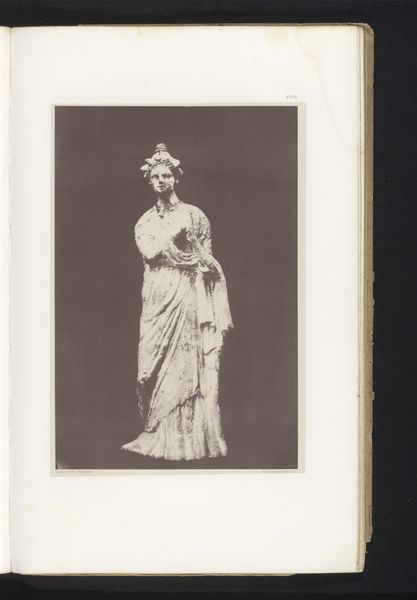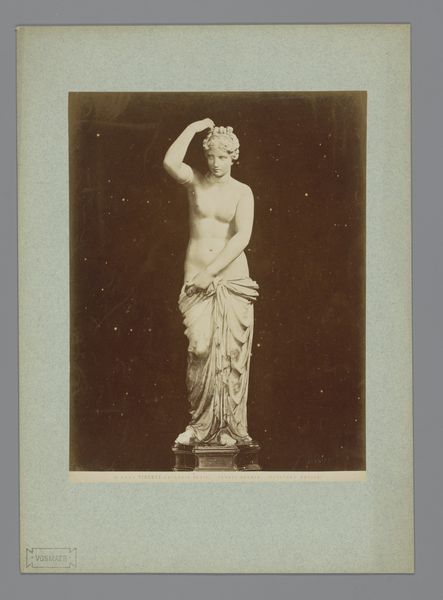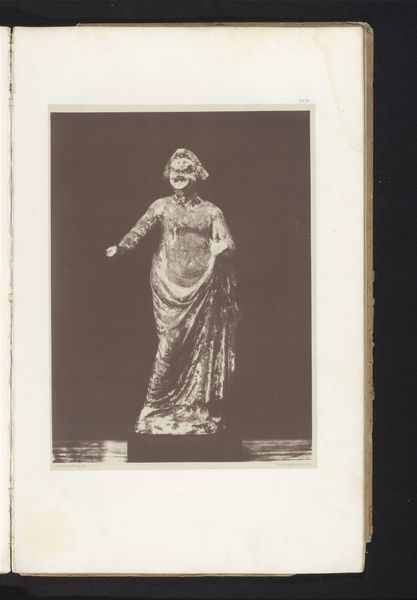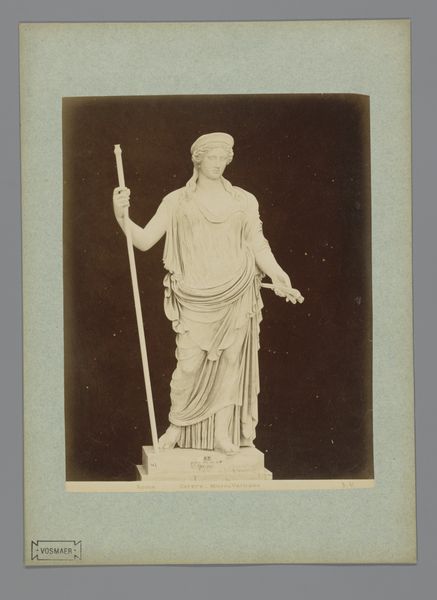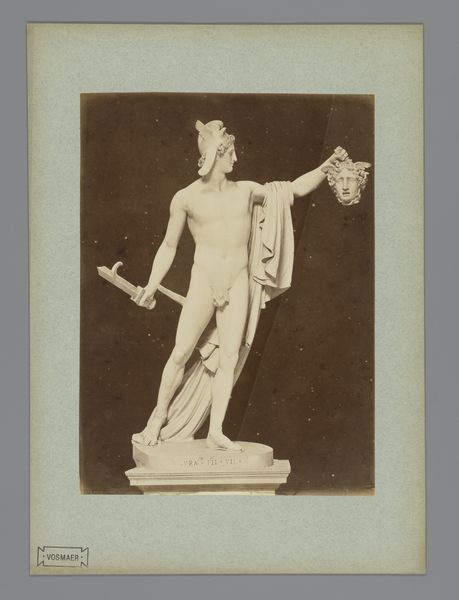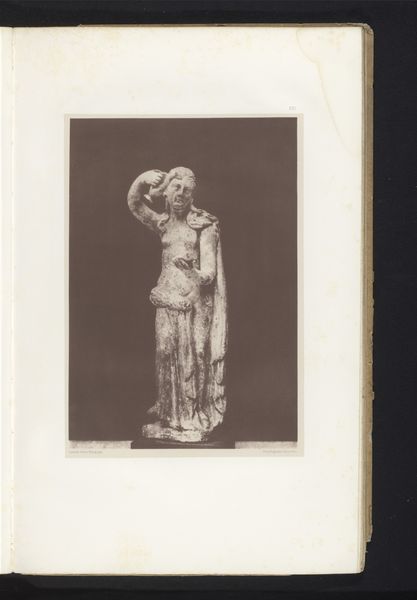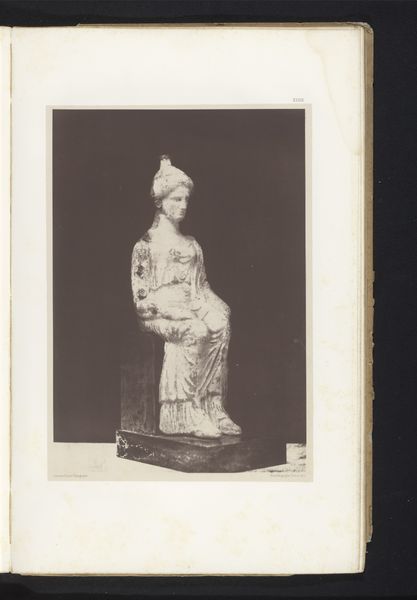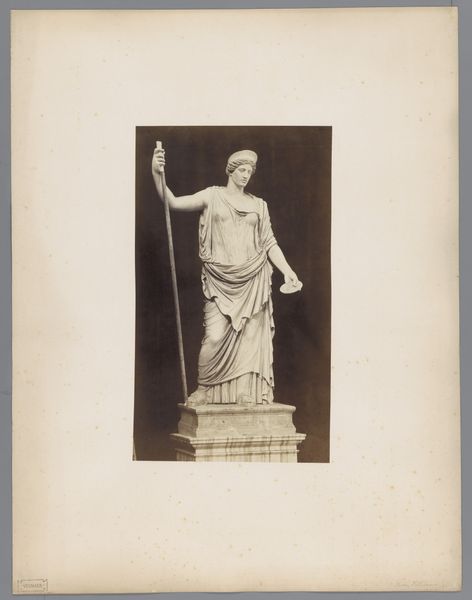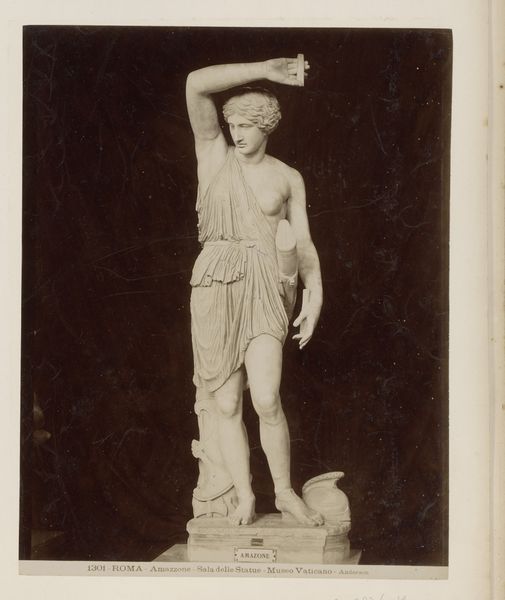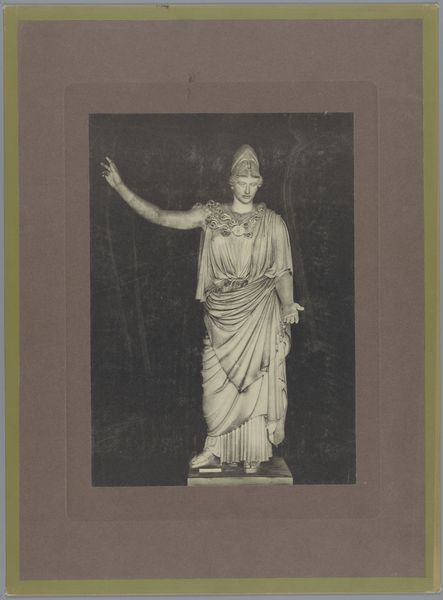
photography, sculpture, terracotta
#
still-life-photography
#
greek-and-roman-art
#
figuration
#
photography
#
ancient-mediterranean
#
sculpture
#
terracotta
#
nude
Dimensions: height 367 mm, width 263 mm
Copyright: Rijks Museum: Open Domain
Curator: It has a quiet, mournful beauty. A photograph of a terracotta sculpture… somehow fragile and powerful at the same time. Editor: Indeed. This image, known as "Terracotta Sculpture of Juno or Venus", captures a moment of classical art viewed through the lens of 19th-century photography, predating 1857, by Marcel Gustave Laverdet. Curator: I’m particularly drawn to the figure’s draped garments, the subtle folds and how they cling to the body suggest so much. The rendering has an evocative quality. I wonder about the specific gesture of her raised hand. Editor: Such depictions, Juno or Venus, frequently played with ideals of beauty, womanhood, and divinity within the strict social mores of the time. Its appropriation for photographic study is interesting because of photography’s increasing importance for scholarship and documentation. Curator: Right, it almost becomes an icon of the classical, reproduced and reinterpreted. But the surface of the terracotta is key; it gives that tangible weight. Editor: Absolutely, you are noticing how the interplay between the coolness of the photographic medium and the warmth implied by the terracotta hints to broader questions around cultural preservation and access, it echoes broader debates about authenticity, about art history itself as an authoritative discipline Curator: Thinking about Juno and Venus and how these icons appear again and again. How do we continually engage and transform ancient ideas? The statue seems to say it, this is timelessness materialized Editor: The act of photographing sculptures like this underscores a democratizing impulse—making these cultural touchstones accessible to a wider audience through reproduction, a form of democratization by technology. Curator: In that light, photography isn't just reproduction but cultural participation—we begin to internalize art that way. I see echoes of generations finding something of themselves within these statues. Editor: I think that connection of personal experience to cultural artifacts explains how such images became ingrained within visual literacy and collective imagination. A visual echo felt long afterwards.
Comments
No comments
Be the first to comment and join the conversation on the ultimate creative platform.
